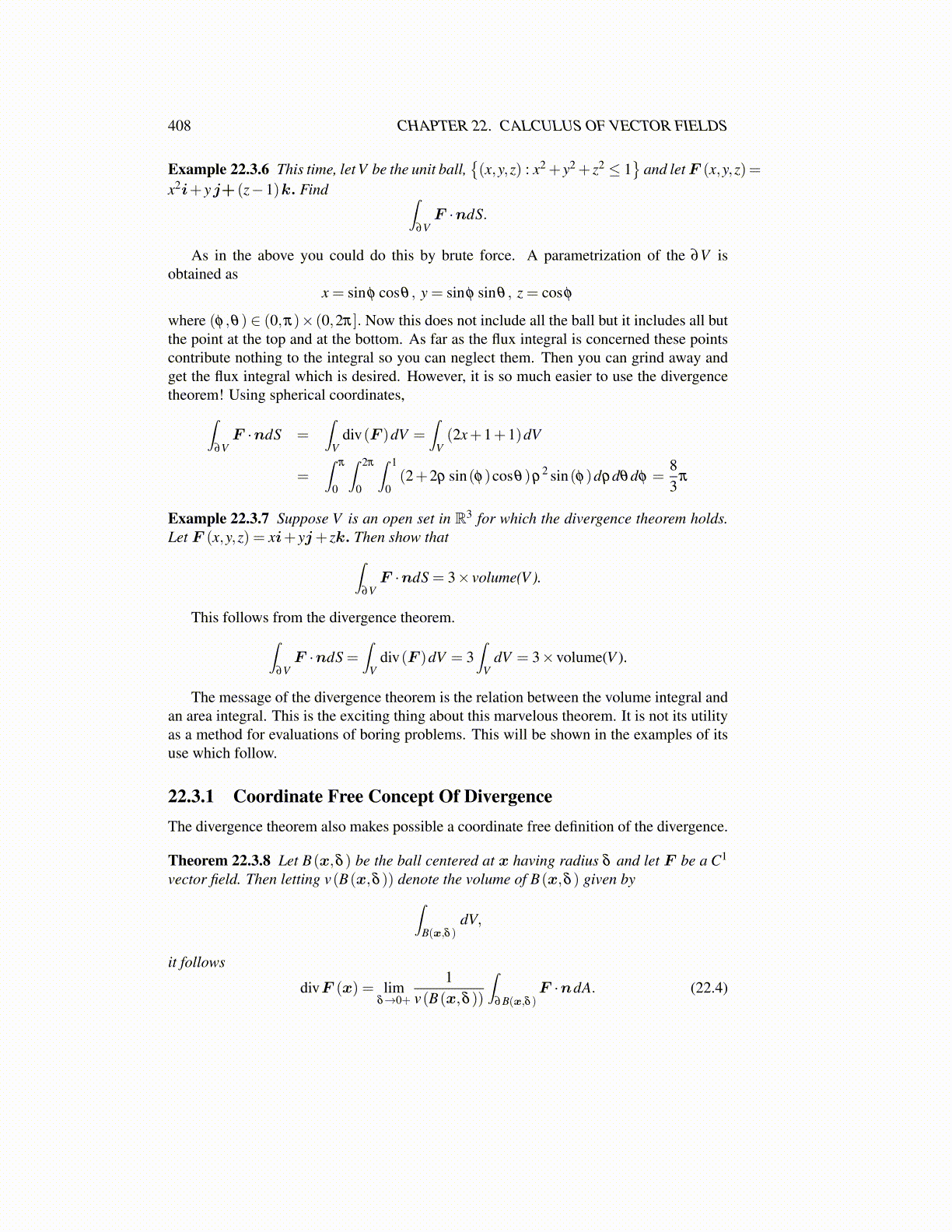
408 CHAPTER 22. CALCULUS OF VECTOR FIELDS
Example 22.3.6 This time, let V be the unit ball,{(x,y,z) : x2 + y2 + z2 ≤ 1
}and let F (x,y,z)=
x2i+ yj+ (z−1)k. Find ∫∂V
F ·ndS.
As in the above you could do this by brute force. A parametrization of the ∂V isobtained as
x = sinφ cosθ , y = sinφ sinθ , z = cosφ
where (φ ,θ) ∈ (0,π)× (0,2π]. Now this does not include all the ball but it includes all butthe point at the top and at the bottom. As far as the flux integral is concerned these pointscontribute nothing to the integral so you can neglect them. Then you can grind away andget the flux integral which is desired. However, it is so much easier to use the divergencetheorem! Using spherical coordinates,∫
∂VF ·ndS =
∫V
div(F )dV =∫
V(2x+1+1)dV
=∫
π
0
∫ 2π
0
∫ 1
0(2+2ρ sin(φ)cosθ)ρ
2 sin(φ)dρdθdφ =83
π
Example 22.3.7 Suppose V is an open set in R3 for which the divergence theorem holds.Let F (x,y,z) = xi+ yj+ zk. Then show that∫
∂VF ·ndS = 3× volume(V ).
This follows from the divergence theorem.∫∂V
F ·ndS =∫
Vdiv(F )dV = 3
∫V
dV = 3×volume(V ).
The message of the divergence theorem is the relation between the volume integral andan area integral. This is the exciting thing about this marvelous theorem. It is not its utilityas a method for evaluations of boring problems. This will be shown in the examples of itsuse which follow.
22.3.1 Coordinate Free Concept Of DivergenceThe divergence theorem also makes possible a coordinate free definition of the divergence.
Theorem 22.3.8 Let B(x,δ ) be the ball centered at x having radius δ and let F be a C1
vector field. Then letting v(B(x,δ )) denote the volume of B(x,δ ) given by∫B(x,δ )
dV,
it follows
divF (x) = limδ→0+
1v(B(x,δ ))
∫∂B(x,δ )
F ·ndA. (22.4)